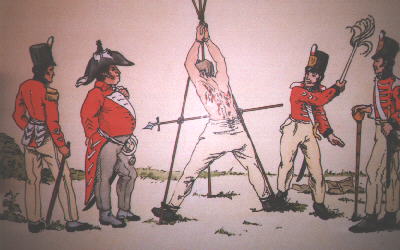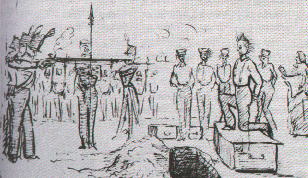


Four of twelve mutineers arrested in the summer of 1803 at Fort George were executed in early March, 1804, in Quebec City. A Court Martial sentenced three others to transportation as felons and acquitted five. The year before, these mutineers had planned to assassinate the commander of the fort, Lieutenant Colonel Roger Sheaffe. Colonel Isaac Brock of the 49th Regiment came from York to apprehend the guilty men. He was personally moved by this tradedy because he knew the men: they had been soldiers in his regiment, fighting against Napoleon on the battlefields of the Continent.
CLICK HERE to read about "The Ancaster Bloody Assize of 1814"

This drawing of a military execution shows the condemned man with his hands tied behind his back kneeling over his grave. The rest of the men were made to stand and watch, this would serve as a deterrent for others. When shot the man would fall into his grave, supposedly.